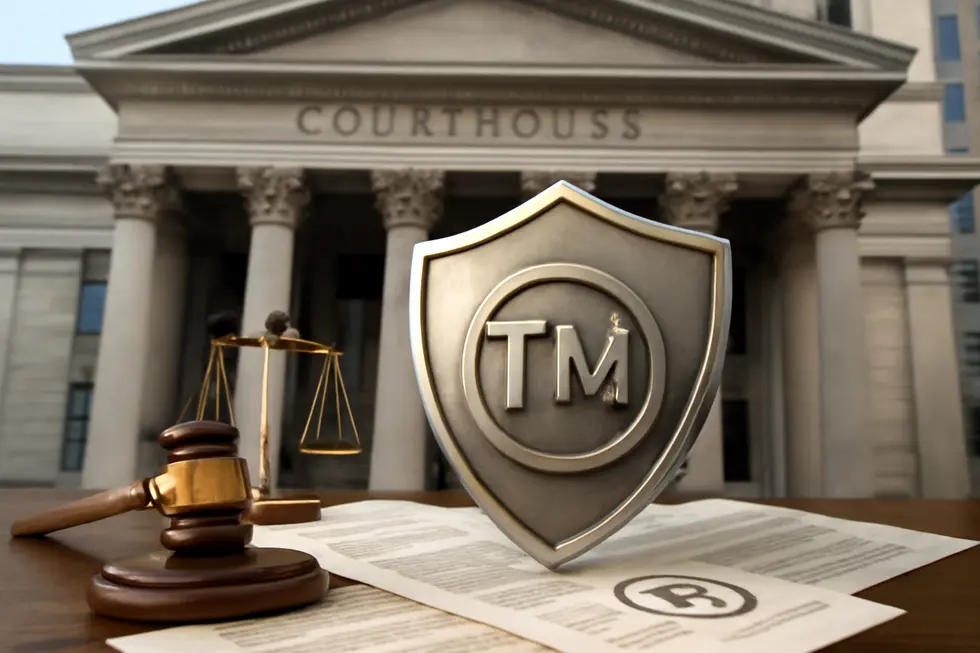Introduction
Establishing a clear and protected brand identity is crucial for any business aiming to stand out and thrive in competitive markets. Company trademarks and logos serve this purpose by legally safeguarding unique identifiers that distinguish your goods or services. These assets go beyond mere visuals; they are valuable business tools that influence customer recognition, trust, and loyalty. This comprehensive guide explores the various types and classifications of trademarks and logos to help you understand what protection options fit your brand. It then delves into the legal mechanisms that enforce these protections and outlines the trademark registration process to secure your exclusive rights effectively. Furthermore, the discussion highlights the economic and branding impacts trademarks and logos have on business growth. Finally, we examine iconic examples that illustrate how strategic trademark and logo use can elevate a company’s market presence and legacy.
Tables of Contents
Chapter 1: Types and Classifications of Company Trademarks and Logos
- Navigating Trademark Classes: Defining the Scope of Brand Protection
- Decoding Trademark Logos: An In-Depth Look at Their Varieties and Legal Significance
Chapter 2: Legal Protection Mechanisms for Company Trademarks and Logos
- Why Trademark Registration Is Vital for Securing Legal Rights Over Company Logos and Brands
- Strategic Licensing and Enforcement: Safeguarding Trademark Integrity and Brand Value
Chapter 3: Navigating the Trademark Registration Process for Company Logos and Trademarks
- Understanding the Legal and Procedural Steps of Trademark Registration
- Economic and Societal Influences of Registering Company Trademarks and Logos
Chapter 4: Economic and Brand Impact of Company Trademarks and Logos
- How Trademarks and Logos Drive Economic Growth and Elevate Market Value
- How Brand Identity, Consumer Trust, and Legal Protection Drive Economic Value Through Company Trademarks and Logos
Chapter 5: Iconic Examples of Company Trademarks and Logos and Their Significance
- How Symbolism Embodies Core Brand Values in Iconic Trademarks and Logos
- How Legal Protections and Market Dynamics Shape the Power of Iconic Trademarks and Logos
Chapter 1: Types and Classifications of Company Trademarks and Logos

1. Navigating Trademark Classes: Defining the Scope of Brand Protection
Navigating Trademark Classes: Defining the Scope of Brand Protection
When securing a company’s trademark or logo, understanding trademark classes is essential to establishing clear and enforceable rights. The internationally recognized Nice Classification system organizes all goods and services into 45 distinct categories—34 for goods and 11 for services. This system ensures that trademarks are protected within relevant market sectors and that identical or similar marks can coexist without legal conflict across unrelated industries.
Classes 1 through 34 cover a wide range of goods, from chemicals and paints to jewelry and clothing. For example, pharmaceuticals fall under one class, while food products belong to another. Services occupy classes 35 to 45, which encompass everything from advertising and business management to repair and technology-related services such as software development. Registering a trademark requires selecting the appropriate class or classes that accurately reflect the company’s activities to maximize protection.
Choosing the correct classes is critical. If a trademark application covers an incorrect or incomplete class, it risks rejection or insufficient legal safeguards. Many businesses operate across multiple sectors and thus must file across several classes, incurring separate fees for each. This multi-class registration strategy helps ensure comprehensive coverage of a brand’s presence.
Logos and design marks are further classified with specialized design search codes. These codes help identify similar graphical elements, aiding trademark offices in evaluating potential conflicts and guarding against consumer confusion.
By categorizing marks within these classes, the trademark system allows distinct brands—such as a personal care product and a confectionery brand with the same name—to thrive independently. Staying informed about class updates and making informed class selections are key steps in maintaining robust trademark protection.
For businesses looking to understand how trademark classes affect their brand strategy and registration needs, resources like this detailed guide on trademark classes offer valuable insights.
2. Decoding Trademark Logos: An In-Depth Look at Their Varieties and Legal Significance
Types of Trademark Logos and Their Legal Roles
Trademark logos serve as powerful identifiers that visually represent a company’s brand and set its products or services apart in the marketplace. These logos can take several distinctive forms, each with unique characteristics and legal implications. At the core are word marks, which protect brand names in a text-only format regardless of font or style. This protection ensures exclusive rights to use the name across relevant industries. In contrast, design marks are purely graphic symbols or images—like an iconic shape or figure—that instantly identify a brand without words.
Often, companies use combination marks, merging both words and graphics to strengthen brand recognition and expand protection under trademark law. These marks can cover not only the textual element but also the visual design, which helps prevent others from adopting confusingly similar combinations. Another vital category includes abstract or stylized marks, where unique fonts, lettering, or artistic variations craft a distinct brand identity that goes beyond plain text or imagery.
Beyond these primary logo types, trademarks encompass broader classifications such as trade dress, which protects the overall look and feel of a product’s packaging or design, signaling origin and quality to consumers. Additionally, collective marks indicate membership within an association or group adhering to specific standards, while certification marks certify that goods or services meet defined criteria established by a certifying authority.
An important aspect in visual branding is the use of trademark symbols — ™ for unregistered trademarks, ℠ for unregistered service marks, and ® for marks officially registered. These symbols inform the public about the mark’s registration status and claim of exclusivity.
Finally, trademark protections are organized into classes based on goods or services, with 45 categories covering a wide array from pharmaceuticals to furniture. This classification guides the scope of legal protection and registration requirements.
Understanding these diverse trademark logo types and their legal classifications empowers businesses to build strong, distinctive brands while securing exclusive rights vital for competitive advantage. For more details on the importance of securing your brand, see do I need a trademark for my business?.
Reference: Trademark classification and types overview (source)
Chapter 2: Legal Protection Mechanisms for Company Trademarks and Logos

1. Why Trademark Registration Is Vital for Securing Legal Rights Over Company Logos and Brands
Trademark registration is a pivotal legal tool that elevates a company’s trademark or logo from a mere identifier to a protected asset with exclusive rights. This process establishes clear ownership, providing public and enforceable proof that deters unauthorized use and solidifies the brand’s place in the marketplace. Unlike unregistered marks, which rely on limited common law protection often confined to specific geographic areas, a registered trademark covers an entire country, ensuring broader and stronger legal safeguards.
The exclusivity granted by registration allows the trademark owner to prevent competitors from using confusingly similar marks, minimizing consumer confusion and preserving brand integrity. This exclusivity also empowers trademark holders to take decisive action against infringers through legal avenues such as cease-and-desist letters and injunctions.
Additionally, registration transforms trademarks into valuable intellectual property. Registered marks can be licensed or sold, enhancing business opportunities and strengthening commercial credibility by distinctly demonstrating ownership. For companies aiming to expand internationally, trademark registration becomes even more critical. Instruments like the Madrid Protocol enable streamlined applications across multiple countries, securing protection under widely accepted first-to-file systems, which is essential for maintaining exclusive global rights.
Overall, trademark registration is not only about protecting a logo or name but also about ensuring the business can confidently license its brand, extend its market reach without the risk of infringement, and enhance its valuation as an intangible asset. For businesses serious about brand security and growth, understanding and engaging in the trademark registration process is a cornerstone of their legal strategy.
For additional insights on the importance of proper trademark registration before licensing, see this detailed resource: The Legal Risks of Licensing a Trademark Without Proper Registration.
2. Strategic Licensing and Enforcement: Safeguarding Trademark Integrity and Brand Value
Effective protection of company trademarks and logos extends beyond registration to robust licensing agreements and vigilant enforcement. Licensing agreements must be meticulously crafted to include clear quality control provisions that ensure licensees uphold the brand’s standards. These controls preserve the trademark’s reputation by requiring adherence to specific product or service benchmarks. Including clauses that grant licensors the right to inspect goods, mandate corrective actions, or suspend licenses for non-compliance fortifies control over trademark use. Enforcement tools within these agreements often specify timelines and penalties, balancing flexibility with accountability.
To objectively enforce quality, third-party audits can be integrated, especially in highly regulated sectors. These audits verify ongoing compliance, with agreements clarifying frequency, costs, and consequences. Defining the scope of licensed use—such as territorial limits, exclusivity, and sublicensing rights—is critical. Exclusive licenses might include performance milestones to avoid underutilization, while non-exclusive agreements can segment rights by market to prevent trademark dilution.
Beyond licensing, trademark owners must proactively defend their marks through monitoring and legal actions against infringement. This includes opposing confusingly similar marks, issuing cease-and-desist notifications, and pursuing litigation when necessary. Additionally, customs recordation can prevent counterfeit imports, and cancellation proceedings can remove unauthorized trademarks from official registries.
Crucially, the strength of these enforcement strategies depends on prior trademark registration. Without registration, legal remedies weaken, exposing licensors to challenges by third parties and risking loss of exclusive rights. Thus, seamless integration of registered trademark rights with detailed licensing terms and active enforcement safeguards the brand’s identity and market value.
For businesses considering trademark protection and enforcement, exploring the essentials of formal registration processes is a vital first step toward effective legal safeguarding. Learn more about trademark requirements and registration.
For further details on licensing quality control risks and enforcement mechanisms, refer to patentpc.com.
Chapter 3: Navigating the Trademark Registration Process for Company Logos and Trademarks

1. Understanding the Legal and Procedural Steps of Trademark Registration
The process of registering company trademarks and logos is a carefully structured journey that establishes exclusive rights to a brand identifier and shields it from marketplace confusion. It begins with a meticulous trademark search, which is indispensable to detect any existing marks that could be deemed confusingly similar. This search extends beyond simple name checks to include variations in spelling and design elements, employing resources like official trademark design manuals to classify and compare logos accurately.
Following the search, selecting the appropriate trademark class or classes is crucial. Each class corresponds to a specific category of goods or services, and choosing the wrong classification can expose a brand to insufficient protection or rejected applications. Businesses often span multiple classes, especially when their offerings diversify across products and services, making a comprehensive understanding of trademark classifications essential for full legal coverage.
Once these foundational steps are complete, the trademark application is prepared and submitted to the relevant authority. This filing must include a clear representation of the mark—be it a word, logo, or a combination—along with a precise description of the goods or services tied to it. The application then undergoes rigorous examination by the trademark office, where compliance with legal standards and potential conflicts with existing trademarks are evaluated. Issues such as distinctiveness and the risk of consumer confusion are key considerations during this phase.
If the application passes scrutiny, it enters the publication phase for opposition, allowing third parties to challenge the registration if they believe their rights are affected. Absence of opposition or resolution in favor of the applicant leads to registration, granting exclusive use rights within the registered classes. Post-registration, companies must keep up their obligations by properly using trademark symbols—™ for unregistered marks and ® for registered ones—and vigilantly monitoring unauthorized use.
Renewals and continued active use further sustain trademark protections over time. This comprehensive legal and procedural framework ensures that company trademarks and logos are not only officially recognized but effectively protected, solidifying brand identity in the competitive marketplace.
For detailed guidance on classifying and searching logo designs, refer to the USPTO Trademark Design Search Manual. For more insights on whether your business needs trademark protection, you can explore this helpful resource.
2. Economic and Societal Influences of Registering Company Trademarks and Logos
The process of registering trademarks and logos for companies is more than a legal formality—it fundamentally shapes both economic dynamics and societal interactions. Economically, securing a trademark transforms a company’s symbol into a critical intangible asset with substantial value. This legal protection grants exclusive market rights, enabling businesses to license their trademarks, increase brand equity, and enhance overall valuation. These protections underpin confidence in business investments and often influence negotiation power during mergers or acquisitions.
At its core, trademark registration requires an exhaustive search to ensure a mark’s uniqueness and appropriate classification by goods or services. Following this, the application undergoes a review that can span months or years, depending on legal challenges and opposition proceedings. Once registered, the trademark must be maintained through periodic renewals, reinforcing the company’s exclusive rights and market stability.
From a societal perspective, registered trademarks serve as navigational tools for consumers, reducing confusion by clearly distinguishing product origins. This clarity fosters trust and informed purchasing decisions. Moreover, trademarks encourage healthy competition by protecting authentic brand identities while deterring counterfeiters and unfair practices. The legal framework balances exclusivity with fair use, preventing monopolies on generic terms while enforcing brand distinctiveness.
Although the registration process incurs costs and administrative commitments, the benefits in protecting market identity, fostering innovation, and supporting consumer confidence far outweigh these investments. By safeguarding companies’ visual and verbal identities, trademarks contribute to orderly marketplaces and resilient business environments.
For businesses exploring this crucial aspect of brand protection, understanding the economic and societal stakes highlights why initiating trademark registration is often a strategic priority. More insights on the necessity of trademark protection can be found at do I need a trademark for my business?.
For comprehensive guidelines on trademark searching and classification, the USPTO Trademark Search system and Trademark Design Code Search Manual remain authoritative resources.
Chapter 4: Economic and Brand Impact of Company Trademarks and Logos

1. How Trademarks and Logos Drive Economic Growth and Elevate Market Value
Company trademarks and logos function not only as identifiers but also as powerful economic assets that shape a company’s financial landscape. By granting exclusive rights, trademarks create a legal shield that prevents competitors from adopting similar marks, thereby protecting a brand’s unique market position. This exclusivity fosters consumer confidence and loyalty—two pillars essential to long-term business growth and competitive edge.
Trademarks translate intangible brand elements into measurable economic value. Companies can monetize these assets by licensing their trademarks, generating royalty income without expanding operational costs. Licensing increases market reach while ensuring consistent brand quality, preserving reputation across industries and regions. Moreover, trademarks are recognized as valuable intangible assets in accounting, influencing the valuation of businesses during mergers and acquisitions by reflecting established customer recognition and trust.
The longevity of trademark protection, with renewals possible indefinitely, supports sustained economic stability and facilitates expansion into new geographic and product markets. Such protection helps companies guard against brand dilution or infringement, which is particularly critical in today’s digital environment where unauthorized use can quickly undermine distinctiveness.
However, maintaining these benefits requires proactive trademark management. Trademark litigation can be expensive, with costs ranging widely depending on jurisdiction and case complexity. Despite high expenses, enforcing trademark rights through legal action is often necessary to preserve brand integrity and market value.
In essence, trademarks and logos are strategic economic tools. Their legal exclusivity, ability to generate revenue through licensing, impact on business valuations, and support for market expansion collectively enhance a company’s financial performance and market standing.
For a deeper exploration of trademark benefits and their role in business, visit Trademark2Go’s comprehensive guide.
2. How Brand Identity, Consumer Trust, and Legal Protection Drive Economic Value Through Company Trademarks and Logos
Company trademarks and logos form the cornerstone of a brand’s identity, shaping how consumers perceive and connect with a company. These marks encapsulate a brand’s mission, values, and personality into a visual or textual symbol that evokes emotional engagement. Such branding transcends simple product features by creating memorable impressions that differentiate companies in competitive markets. When customers recognize and resonate with a trademark, their preference often translates into repeat purchases, ultimately building strong consumer loyalty.
Consumer trust is deeply intertwined with trademark recognition. The consistent association of a protected logo or name with reliable quality signals authenticity and reduces buyers’ risk perceptions. This trust not only deters customers from switching to competitors but also supports premium pricing strategies. In markets where consumers rely heavily on brand reputation, trademarks become assurance marks that protect the company’s promise of value.
Legally, trademarks grant exclusive rights to distinctive visual or textual elements within specified industries. This protection prevents others from using confusingly similar marks that could harm brand reputation or mislead consumers. Registered trademarks empower companies to enforce their rights through legal action, helping combat counterfeit goods and unauthorized usage. Such enforcement preserves the brand’s integrity and maintains consumer confidence, a factor crucial for sustained economic strength.
The interaction of brand identity, consumer trust, and legal safeguards amplifies economic benefits. Distinctive trademarks carve out clear market positioning, reduce marketing expenses by leveraging recognition, and build intangible assets that increase overall company valuation. They attract investors and enable businesses to command higher prices by reinforcing perceived reliability.
This dynamic underscores why trademarks and logos are not mere artistic elements but strategic assets vital to economic success. For companies exploring trademark registration and protection strategies, resources like Trademark2Go offer practical guidance to navigate this essential process and secure lasting brand equity.
External Reference:
- United States Patent and Trademark Office (USPTO) – Trademark Basics: https://www.uspto.gov/trademarks/basics
Chapter 5: Iconic Examples of Company Trademarks and Logos and Their Significance
![]()
1. How Symbolism Embodies Core Brand Values in Iconic Trademarks and Logos
Iconic company trademarks and logos masterfully distill deep brand values into simple, evocative visuals that resonate emotionally with consumers. This symbolic power is central to their enduring recognition and influence, as seen in some of the world’s most famous marks. The bitten apple, for instance, symbolizes not only knowledge and innovation but also the fusion of timeless wisdom with cutting-edge technology. Its distinctive bite differentiates it visually while inspiring cultural myths that deepen its significance, creating a bridge between tradition and modernity. Similarly, the swoosh is a hallmark of movement and victory, capturing athletic dynamism through a sleek and uncomplicated form. It energizes and embodies achievement, motivating athletes worldwide without the need for words. The seashell emblem reflects heritage and reliability, maintaining strong ties to its company’s origins in exploration over a century ago. Its consistent, unchanging design fosters consumer trust by emphasizing long-term stability. In contrast, the siren logo taps into community and mythic storytelling, drawing on local maritime legends to create a warm cultural connection around coffee and gathering. The design invites consumers into a shared narrative that transcends the product itself. Meanwhile, the industrial symbolism in the emblem representing coal, iron ore, and steel speaks to resilience and local pride. It encapsulates the blue-collar spirit and perseverance integral to both the team it brands and the city it represents. These trademarks echo the tradition of medieval heraldry, where colors and symbols conveyed identity and allegiance instantly and consistently. Today’s logos continue this legacy by embedding meaning into minimalist visuals that communicate a brand’s promise and values instantly. For businesses aiming to secure such meaningful protection, understanding the intersection between symbolism and trademark law is crucial; knowing when to pursue formal trademark registration can safeguard these icons from misuse. For those considering this, detailed guidance on trademark necessity and application can be found at Trademark2Go’s resource on whether you need a trademark for your business. Ultimately, these iconic trademarks underscore how strategic symbolism transforms logos into powerful brand ambassadors that connect enduringly with consumers.
For a comprehensive exploration of logo meanings and branding history, see the research by Wortham on branding’s evolution from heraldry to modern identity design.
2. How Legal Protections and Market Dynamics Shape the Power of Iconic Trademarks and Logos
How Legal Protections and Market Dynamics Shape the Power of Iconic Trademarks and Logos
Iconic trademarks and logos hold immense value by combining legal authority with strong market influence. Their protection is essential not only for maintaining a brand’s unique identity but for empowering companies to secure exclusive rights that prevent consumer confusion and unfair competition. When a trademark successfully distinguishes a product, it establishes a trust mark recognized by consumers globally.
Legal precedents demonstrate how vigilance in trademark protection reinforces market position. For example, when a tech giant defended its mark against a similarly named company in its sector, the ruling underscored the critical role of trademark distinctiveness in avoiding brand dilution. Another landmark decision extended protections beyond just names to encompass trade dress—the visual elements such as packaging design—that differentiate products. Such rulings highlight how even the look and feel of a product can be legally shielded to preserve brand equity.
The marketplace reflects these protections through enhanced consumer loyalty and competitive advantage. Famous trademarks discourage imitation and counterfeit goods by signaling reliable quality. Yet, challenges arise when dilution occurs, such as the unauthorized use of a renowned brand’s name outside its original industry. This weakens the mark’s exclusivity and can erode its prestige, proving that enforcement extends beyond direct competitors.
Registration of trademarks provides a powerful toolkit for legal remedies, including injunctions and damage claims to combat infringement. It also enables customs enforcement to block counterfeit imports. Modern trademark law further addresses emerging threats like cybersquatting—where unauthorized parties register domain names of famous marks—to prevent bad-faith exploitation.
Together, these legal and market mechanisms sustain the iconic status of company trademarks and logos, ensuring they remain indispensable assets for identity, exclusivity, and enduring consumer trust.
For more details on securing and protecting your brand’s distinct identity, visit Trademark2Go’s guide on whether you need a trademark for your business.
External reference: Intel vs. Intellisoft trademark case and impact on brand protection
Final thoughts
Understanding company trademarks and logos is fundamental to crafting a strong business identity that commands respect and customer loyalty. From grasping the distinct types and classifications to recognizing the essential legal protections, every business owner gains valuable knowledge critical for safeguarding their brand. Navigating the trademark registration process ensures your brand’s uniqueness is protected, while appreciating the economic and brand impact highlights why investment in trademarks and logos pays dividends in growth and market presence. Drawing inspiration from iconic examples demonstrates how powerful these legal tools can be in defining business success over time. Protecting your trademarks and logos not only preserves your brand’s image but also empowers your business with lasting competitive advantage and consumer recognition.
Your IP is the foundation of your success – let’s protect it together before it’s too late. We can’t wait to help you turn your ideas into legally secured assets.
About us
undefined


